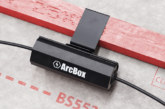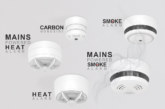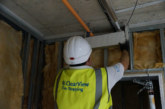 Prioritising fire safety has never been more important for residential developers, says Ibrahim Imam, Co-Founder of PlanRadar.
Prioritising fire safety has never been more important for residential developers, says Ibrahim Imam, Co-Founder of PlanRadar.
Sweeping regulatory changes are a clear indication of where the industry is heading, and the Government is (rightly) cracking down on fire safety in construction, leaving no stone unturned.
It means housebuilders need to be on their A-game, understanding how the sector is changing here and now, as well as anticipating what’s coming down the line. New legislation, particularly the Fire Safety Act and the Building Safety Act, also means fire safety is being considered far earlier in the construction process, where it can be most effective, particularly for high- and medium-rise residential developments. No longer is it an after-thought when the initial construction phase is complete.
However, navigating the new framework, and achieving that all important Golden Thread of information can be tricky, so developers are increasingly turning to safety inspection platforms to ensure accurate, and comprehensive data to remain compliant.
Importantly it’s giving project personnel the ability to carry out robust quality control inspections, providing clear evidence that work has been completed according to industry best practice. However, the role of digital safety inspections isn’t just important for onsite sign-off procedures, it now plays an important role in securing planning permissions on new developments, in line with the latest regulation.
Fire safety strategies
Companies now need to prove that fire safety strategies have been considered at all stages and will be implemented with gusto, and it’s non-negotiable. After considerable trailing, the landmark Planning Gateway One was introduced in August 2021, requiring developers to submit a detailed fire statement-of-intent detailing exactly how fire safety will be carried out. As part of this phase, a Health and Safety Executive consultee is also assigned to ensure that standards are being met. It’s ushering in a new age of don’t comply, can’t build.
The upcoming Gateways Two and Three are also significant. Here developers will need to demonstrate organisational capabilities to manage projects and workers, providing proof of tools and infrastructure that will get the job done. How developers meet requirements related to the Golden Thread of Information also make up part of this phase, so that information around the design and construction of a building is being captured digitally and correctly.
This will be crucial towards a comprehensive and accurate handover, as well as an Operations and Maintenance (O&M) Manual that’s fit for purpose.
However, collating this holistic package of fire safety information isn’t a straightforward task, and requires considerable precision and attention-to-detail. However, as previously mentioned, digital inspection platforms and software can simplify the process through better task management, data capture and collation within one secure, online location.
Digital inspection tools
Whether it’s for structures yet to be built, or existing buildings looking to level up their fire safety offering, digital inspection tools support better, more strategic safety planning, which meets regulatory requirements, and ultimately legal sign-off on projects.
It’s not only fire safety where these tools can be effective; they can also significantly reduce the probability of errors during construction, as well as resolving them when they do occur. Some of the best performing AI-supported software is now able to detect, identify and capture defects, recording images and video, and sharing them real-time across project team members, so site managers can be sure work has been completed, even when they aren’t physically present. Furthermore, these tools have the ability to assign tasks to specific individuals, making for crystal clear communication and direction so that each person is aware of their responsibilities.
Having access to this accrued data and insight can also streamline reporting processes to satisfy anyone from site manager to C-suite level, so that they can be sure work has been carried out to the best of abilities. Of course, returning to fire safety, this is particularly important for HSE (Health and Safety Executive) inspections, where evidence will be scrutinised to ensure it meets industry standards. Without these types of tools, collecting this information can be long-winded and prone to error, making it more difficult for safety inspectors to access the data they need.
As you can see it’s something of a game changer, helping the sector to meet this ‘brave new world’ of regulation, but it’s just the tip of a far more exciting, and far-reaching iceberg. We all realise the industry is in desperate need of watertight fire safety controls and digital tools hold the keys to make it possible, whilst also delivering higher quality, easier-to-maintain properties.
So, for developers and asset owners, investing in fire safety inspection platforms not only helps futureproof their business, for quicker more thorough sign-offs on new building projects but it also delivers peace of mind that their organisation is doing the right thing. Ultimately, it’s ensuring better, safer and more comfortable homes for future, and current, residents.









